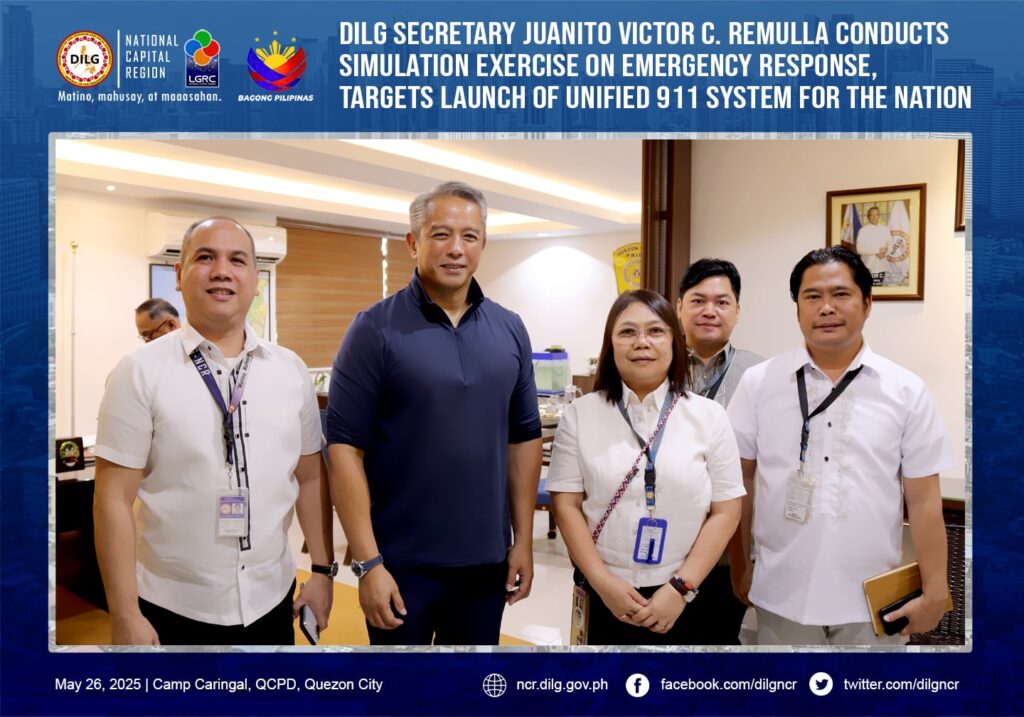
Department of the Interior and Local Government (DILG) Secretary Juanito Victor C. Remulla, together with National Capital Region Police Office (NCRPO) Chief Brig. Gen. Anthony Aberin, and key district directors, observed a high-level simulation exercise on Monday at the Quezon City Police District-Integrated Command and Control Center (QCPD-IC3) in Camp Karingal. Joining them in the simulation were DILG-NCR Regional Director Maria Lourdes L. Agustin, CESO III and City Director Emmanuel D. Borromeo, CESO V.
The exercise showcased the rapid response capability of the police force during a mock incident, highlighting the efficiency, coordination, and readiness of units under the intensified and recalibrated police visibility program which is a government initiative aimed at improving public safety and crime prevention in the whole nation.
“This initiative is a critical component of our broader public safety strategy and sends a clear message about protecting our communities and ensuring that our police are equipped, trained, and visible when it matters most,” Secretary Remulla mentioned.
The simulation was designed to demonstrate how real-time monitoring and inter-unit coordination can significantly reduce response times and improve outcomes during emergencies. The drill was part of a series of operational evaluations aimed at refining protocols and enhancing police presence, particularly in high-density and high-risk areas.
The Secretary also mentioned the creation of a unified 911 emergency response system that will be expanded to all parts of the nation as part of the DILG’s intensified efforts in responding to the citizens.
The intensified and recalibrated police visibility is an initiative that is part of the DILG’s continuing campaign to promote peace and order, with a focus on visibility, community engagement, and proactive creation of policies.
The said activity reaffirmed the government’s commitment to smarter, safer, and more responsive law enforcement driven by innovation, professionalism, and the unwavering goals of participatory governance and public trust.
